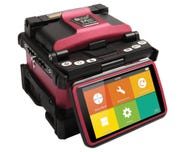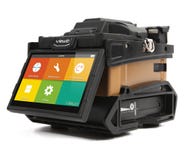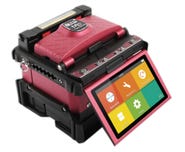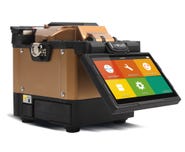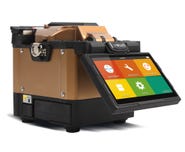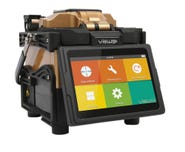

Buyers Guide: INNO Fusion Splicers
Before investing in a fusion splicer, it’s worth making sure you understand your options. That means researching the features and benefits of each model before you can select the one that’s right for you. This buyers guide will take you through some of the different fusion splicer configurations available in the INNO range, along with our top picks for economy, size, and value.
What to consider when buying a Fusion Splicer
When purchasing a fusion splicer, you’ll need to make some decisions based on your requirements and what features matter most to you. For example, do you need a compact, hand-held unit, or are you looking for extremely high performance? Do you need a cloud-based management system, or will you be happy with a model that simply provides storage of results?
When evaluating a fusion splicer, make sure you check the following specifications:
Alignment method – INNO range includes models that use clad or core alignment, as well as a ribbon splicer option.
Speed – the typical splice time and heating time will vary depending on model, and some models have a built in “quick-mode”
Magnification – check the range of magnification capability the unit has, as models can range from around 250x up to 520x magnification.
Battery life – this will tell you how many splice + heat cycles the unit can complete per charge.


Our Top Pick: INNO VIEW8 PRO
This core-alignment splicer is one of the best units available on the market. The VIEW8 PRO is more on the premium side but comes packed full of features, with an incredible 6 second splice time in quick mode. With the VIEW8 PRO you get access to INNO’s View Pro Cloud Management System for real-time operation and management online. The VIEW8 PRO also has the best battery life of the whole range, capable of a huge 355 splice and heat cycles per charge. Invest now and reap the rewards over years of reliable operation.
Best Compact Option: INNO M9
This ultra-portable unit combines great functionality in an amazingly compact package. Sitting at more than a kilogram lighter than the VIEW8 PRO, the M9 is a great hand-held option. It features a slightly smaller 4.3” touch screen and a battery life that will typically last you 110 splice & heat cycles. Featuring core alignment splicing method with a super-fast splicing speed of 5.5s, the INNO M9 is a great choice when convenience is a must.




Most Affordable: INNO M7
Small but accurate, the INNO M7 is a great option if you are looking for an affordable clad-alignment splicer. Sitting at around 1.5kgs, the M7 is the lightest in the INNO range, but is still capable of around 110 splice and heat cycles per charge. The splice time of the M7 sits at 12 seconds which is the slowest in the range, but the M7 makes up for this in convenience and portability.
Best Value for Money: INNO VIEW5 PRO
This mid-range option has all the features you need from a core alignment splicer, as well as sharing some of the bells and whistles of the more expensive options. With the VIEW5 PRO you get access to INNO’s View Pro Cloud Management System for real-time operation and management online. An impressive magnification rate of 520x sets this great value splicer apart from its competitors.


Why Choose INNO?
We partner with INNO because they develop and provide reliable fibre splicing equipment that we trust. The INNO range of fibre fusion splicing products including core splicers, clad splicers and ribbon splicers can cope with all Australian environments including wind, water, dust, dirt, and moisture and are backed by a 3-year limited manufacturing warranty.
Download our simple selection chart to compare key features and specifications across the INNO range or contact our team to discuss your requirements. We can help you choose the right fusion splicer for your needs.
Recent Articles
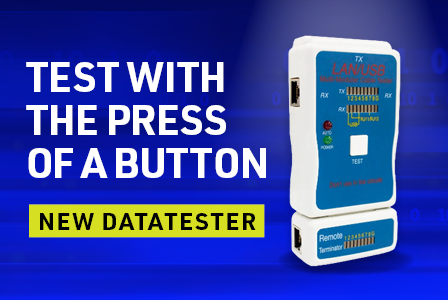
Test Network Cabling & Patch Cords FAST with the New DATATESTER by CABAC
Testing LAN cables is quick and easy when you’ve got the new CABAC DATATESTER on hand. This budget LAN cable tester is perfect for contractors who need to test data and coaxial cable for correct termination.
View Products
Exploring the Advantages of Thin Patch Leads
For Australian data installers, selecting the right network components is critical to achieving the performance and reliability that your customers expect. Among these components, the humble patch lead plays a crucial role in interconnecting various devices.
View Products
FOBOT Buying Guide
In this informative article, we will provide a basic buying guide for FOBOTs or “Fibre Optic Break Out Trays” so that you can choose the right product for your specific needs.
View Products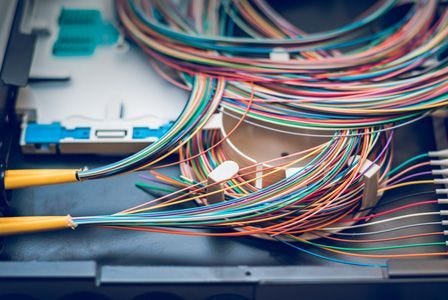
What is a FOBOT?
In this article, we will explain what a FOBOT is and where they are used. We will also describe how a FOBOT works and the important role this component plays in managing and distributing optical fibres efficiently. So, if you're looking to learn all about FOBOTs, make sure to read this article...
View Products
What is the difference between OS1 and OS2 Singlemode Optical Fibre?
This technical article delves into the differences between OS1 and OS2 Singlemode fibre optics, including their core characteristics, performance specifications, and ideal applications.
View Products
